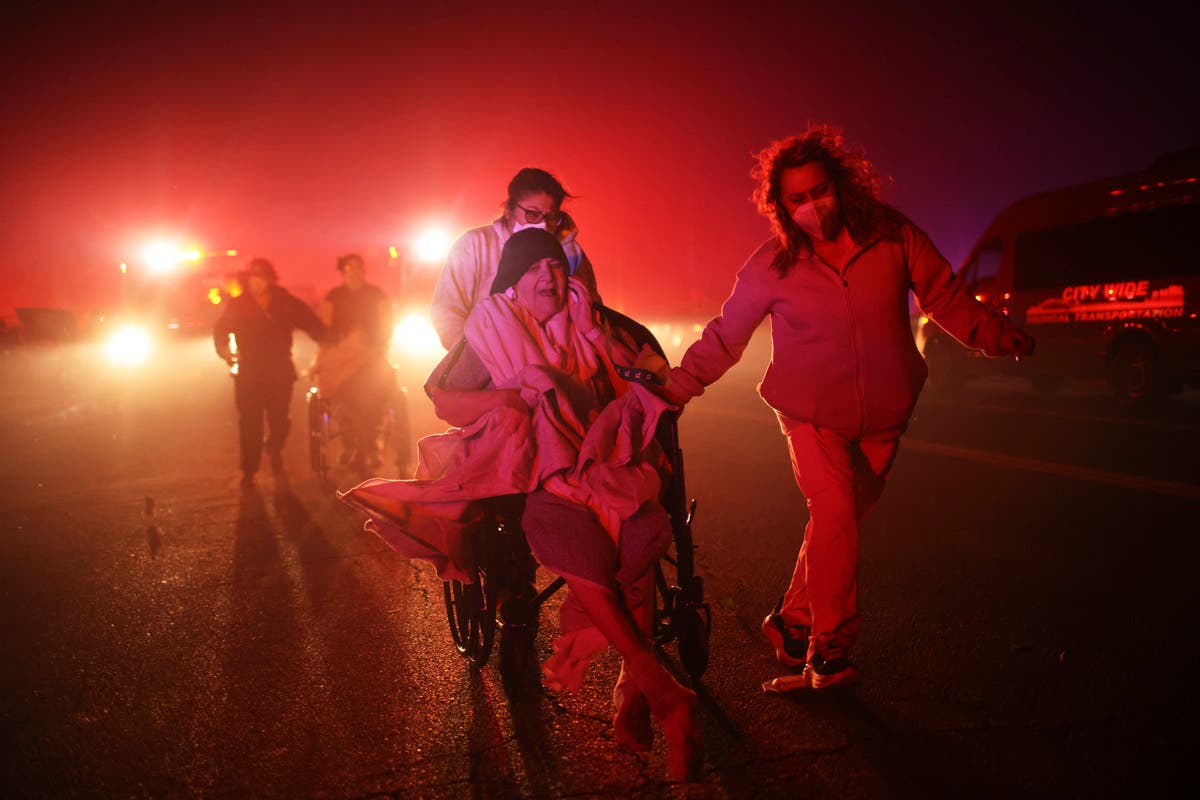Powerful Santa Ana winds are fueling destructive wildfires across Southern California, forcing evacuations and leaving tens of thousands without power. The National Weather Service has issued extreme weather warnings, anticipating winds reaching up to 100 mph in some areas.
Evacuations are underway as multiple blazes, including the Pacific Palisades fire, which has grown to nearly 5,000 acres, and the Eaton fire consuming over 1,000 acres, continue to spread rapidly. The Hurst fire in Sylmar has also engulfed 500 acres. Thousands of residents have been displaced, and over 300,000 are without electricity.
California Governor Gavin Newsom underscored the severity of the situation, stating that "many structures" have already been destroyed. Fire crews face a challenging task, battling the extreme wind gusts.
Santa Ana Winds: A Powerful Force Behind the Fires
The Santa Ana winds, characterized by their dry, warm, and gusty nature, originate from the Great Basin region. These winds funnel through mountain passes, gaining speed and intensity as they descend on Southern California. This powerful combination of conditions creates ideal wildfire conditions.
This phenomenon is particularly concerning during the cooler months, between September and May. The low humidity (10-20%) exacerbates the fire risk, making dry vegetation highly susceptible to ignition. Even small sparks can quickly escalate into major blazes.
Winds Intensify Wednesday, Bringing Widespread Danger
The National Weather Service predicts the most intense winds will occur from Tuesday evening through Wednesday afternoon, with widespread gusts of 50-80 mph and potentially isolated gusts exceeding 100 mph in mountainous areas.
Specific areas of concern include highways 118 and 210 corridors, the San Gabriel, Santa Susana, and Santa Monica mountain ranges and foothills, as well as the San Gabriel and San Fernando valleys, Pasadena, Burbank, Hollywood, and Malibu.
A History of Destruction
Historically, Santa Ana winds have been implicated in some of Southern California's deadliest wildfires. The 2018 Woosley fire, fueled by these winds, burned almost 100,000 acres and highlighted the destructive potential of this meteorological phenomenon. These conditions underscore the vulnerability of the region to catastrophic fire outbreaks.







